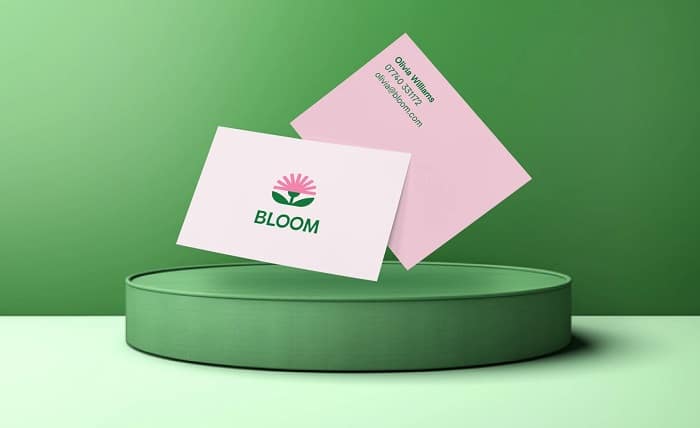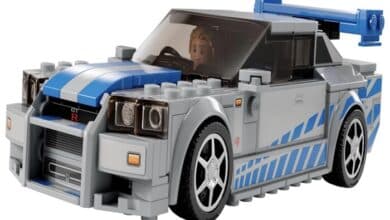The Ultimate Guide to Business Cards: Everything You Need to Know

In today’s digital era, it may seem like physical business cards are becoming obsolete. However, business cards remain one of the most effective ways to introduce yourself and your company to others. Whether you’re attending a networking event, a business meeting, or simply encountering someone new in your industry, handing over a professional business card can create a lasting impression. In this comprehensive guide, we’ll explore why business cards are still essential, the different types available, tips for designing an impactful card, and even how to embrace digital alternatives.
The Power of Business Cards in Networking
One of the primary functions of business cards is networking. When you meet someone for the first time, a well-designed business card provides a tangible representation of who you are and what your business offers. Unlike digital connections, which can be easily forgotten or lost in a sea of emails and social media profiles, a physical card can leave a lasting impression on your contact.
Business cards allow you to share important details, such as your name, contact information, job title, and business website, in a compact and easily accessible format. They make it easy for others to remember you and reach out to you later. In the fast-paced world of business, being able to make that immediate connection with a business card can help solidify relationships and foster new opportunities.
Key Elements of a Successful Business Card Design
Creating an effective business card involves more than just printing your name and phone number. A successful business card design should be clean, professional, and represent your brand’s identity. Here are the key elements to consider when designing a business card:
- Logo and Branding: Your logo should be prominently displayed on your business card, reinforcing your company’s brand identity.
- Contact Information: Make sure your name, title, email address, phone number, and website are all included. Avoid cluttering the card with too much information.
- Color and Font Choices: Choose colors and fonts that align with your company’s brand. The design should be visually appealing but not overwhelming.
- White Space: Don’t overcrowd the card. White space helps create a clean, readable design.
- Quality Material: The paper or material of your business card can make a huge difference in the impression it gives. Choose a high-quality material that feels substantial in the hand.
The Different Types of Business Cards
Business cards come in many different styles, materials, and formats. Understanding the different types of business cards available can help you choose the right one for your brand. Here are a few options to consider:
- Traditional Paper Cards: The classic option. These cards are printed on cardstock and come in various finishes such as matte, glossy, or textured.
- Metal Business Cards: For those looking to make a bold statement, metal business cards offer a sleek and high-end feel. They are durable, luxurious, and often stand out.
- Plastic Business Cards: Durable and unique, plastic business cards offer flexibility in design. They are ideal for companies wanting to stand out with a modern, innovative look.
- Digital Business Cards: With the rise of mobile phones and apps, digital business cards are becoming more popular. These cards can be shared via email, apps, or QR codes and are eco-friendly.
- Folded Business Cards: These cards are larger and fold in half, allowing you to include more information or even showcase a portfolio.
Each type of business card offers its unique benefits, so it’s important to consider what will best represent your brand’s personality and purpose.
How to Make Your Business Card Stand Out
In a sea of business cards, it’s important to ensure that yours stands out. The design is a major factor, but there are several other strategies you can employ to ensure your business card catches attention:
- Use Unique Shapes: While most business cards are rectangular, consider opting for a custom shape that aligns with your brand. A square or circular card might be more memorable and eye-catching.
- Incorporate Textures: Adding textures to your business card, such as embossing, raised print, or even a matte finish, can create a tactile experience for the person receiving it.
- Add a Call-to-Action: Including a call-to-action (CTA) on your business card can encourage people to take the next step. This could be a special discount, an invitation to visit your website, or a prompt to follow your social media.
- Personalized Designs: Incorporate your personal touch into the design. For example, if you’re an artist or photographer, include a piece of your work or a relevant image that represents your brand.
- Eco-Friendly Materials: If sustainability is important to you and your company, consider using eco-friendly materials for your business cards. These types of cards reflect a forward-thinking brand that cares about the environment.
Digital Business Cards: The Future of Networking?
As technology advances, the concept of business cards has evolved. Digital business cards are an environmentally friendly and modern alternative to the traditional paper card. Instead of handing someone a physical card, you can share a digital version through email, a link, or even a QR code.
Digital business cards are incredibly convenient, as they can easily be updated and shared across multiple platforms. You can integrate features such as a direct link to your LinkedIn profile, website, or portfolio. Additionally, digital business cards help reduce waste, making them an excellent choice for environmentally-conscious individuals.
Despite the many advantages of digital business cards, some people still prefer the personal touch of a physical card. As technology continues to advance, both digital and traditional business cards may coexist, depending on the situation and audience.
Business Cards for Different Industries
Not all business cards are created equal. Different industries may require different designs or types of business cards to be effective. Here are a few examples of how business cards can be tailored to different industries:
- Creative Industries (Artists, Designers, Photographers): A business card in a creative field should reflect the individual’s style. This could mean using unconventional materials, bold colors, or integrating artwork into the card.
- Real Estate: For real estate agents, a business card might include photos of recent listings or even a map with your contact information. A professional, clean design is key to leaving a good impression.
- Tech and Startups: Tech companies often opt for sleek, modern designs with clean lines and minimalistic aesthetics. Digital business cards are also popular in the tech world for their easy accessibility and sharing capabilities.
- Healthcare Professionals: For doctors, dentists, and other healthcare providers, business cards need to look professional and convey trustworthiness. Including certifications, office hours, and emergency contact details is crucial.
- Lawyers and Financial Advisors: Lawyers and financial professionals need business cards that convey authority and reliability. Simple, elegant designs with a focus on professionalism are essential.
Conclusion
In a world where we’re increasingly relying on digital tools, business cards still hold significant value in building relationships and promoting your brand. Whether you’re attending a conference, meeting a client, or simply engaging in a casual conversation, handing over a well-designed business card can make all the difference in leaving a lasting impression. As we continue to move towards digital networking, business cards—both physical and digital—remain vital tools for connection.
By considering the design, material, and purpose of your business card, you can create a valuable networking tool that not only shares your contact information but also represents your brand and values. As you move forward in your business endeavors, don’t underestimate the power of a thoughtfully crafted business card.
FAQs
1. Do I still need physical business cards in the digital age?
Yes, physical business cards remain important for networking in face-to-face situations. They leave a lasting impression and provide a tangible connection to your business.
2. What is the best material for business cards?
The best material depends on your brand’s personality. Traditional cardstock is classic, while metal or plastic cards are great for standing out. Eco-friendly materials are also a good option.
3. Can business cards be used for digital networking?
Yes, digital business cards are becoming more popular and can be shared through email, apps, or QR codes. They are an eco-friendly and convenient alternative to traditional cards.
4. How do I make my business card stand out?
To make your business card stand out, use unique shapes, textures, and personalized designs that reflect your brand. Adding a call-to-action or eco-friendly materials can also help.
5. Are digital business cards better than physical ones?
Digital business cards offer convenience and are environmentally friendly. However, physical business cards are still preferred in certain networking situations for their personal touch.




